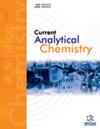Research Progress in Starch-based Dye Adsorbents
IF 1.7
4区 化学
Q3 CHEMISTRY, ANALYTICAL
引用次数: 0
Abstract
: Starch is a typical environment-friendly biomass material and there are considerable quantities of reactive hydroxyl groups in the starch molecule chain. Modifications could introduce a large number of functional groups, which can bind some dyeing contaminants, thereby removing the dyes. According to the different modification methods, starch-based adsorbents can be divided into three categories that are aminated-modified starch, ionic-modified starch, and composite-modified starch. The preparation method, structure properties, and adsorption capacity of modified starch dye adsorbents have been reviewed in this article. It can be concluded that the adsorption property of adsorbents depends on different adsorption conditions and modification methods. The adsorption properties of the adsorbents have been found to be influenced by temperature, initial concentration of dyes, and pH value of solution. Amination modification can introduce amino or amine groups into the starch skeleton to enhance the chelation or electrostatic effect of the adsorbents on dyes. Ion modification can improve the ion exchange and electrostatic interaction between the adsorbents and the dye. Composite modification can improve specific surface area, pore size, adsorption site, and structural stability of the adsorbents. Future studies are required to focus on producing dye adsorbents with high adsorption performance, stable structure, recyclability, and degradability.淀粉基染料吸附剂的研究进展
:淀粉是一种典型的环保型生物质材料,淀粉分子链中含有大量活性羟基。改性可以引入大量的官能团,这些官能团可以结合一些染色污染物,从而去除染料。根据改性方法的不同,淀粉基吸附剂可分为胺化改性淀粉、离子改性淀粉和复合改性淀粉三大类。本文综述了改性淀粉染料吸附剂的制备方法、结构特性和吸附容量。结论是吸附剂的吸附性能取决于不同的吸附条件和改性方法。研究发现,吸附剂的吸附性能受温度、染料初始浓度和溶液 pH 值的影响。胺化改性可在淀粉骨架中引入氨基或胺基,以增强吸附剂对染料的螯合或静电效应。离子改性可改善吸附剂与染料之间的离子交换和静电作用。复合改性可以改善吸附剂的比表面积、孔径、吸附位点和结构稳定性。未来的研究需要重点关注生产具有高吸附性能、稳定结构、可回收和可降解的染料吸附剂。
本文章由计算机程序翻译,如有差异,请以英文原文为准。
求助全文
约1分钟内获得全文
求助全文
来源期刊

Current Analytical Chemistry
化学-分析化学
CiteScore
4.10
自引率
0.00%
发文量
90
审稿时长
9 months
期刊介绍:
Current Analytical Chemistry publishes full-length/mini reviews and original research articles on the most recent advances in analytical chemistry. All aspects of the field are represented, including analytical methodology, techniques, and instrumentation in both fundamental and applied research topics of interest to the broad readership of the journal. Current Analytical Chemistry strives to serve as an authoritative source of information in analytical chemistry and in related applications such as biochemical analysis, pharmaceutical research, quantitative biological imaging, novel sensors, and nanotechnology.
 求助内容:
求助内容: 应助结果提醒方式:
应助结果提醒方式:


